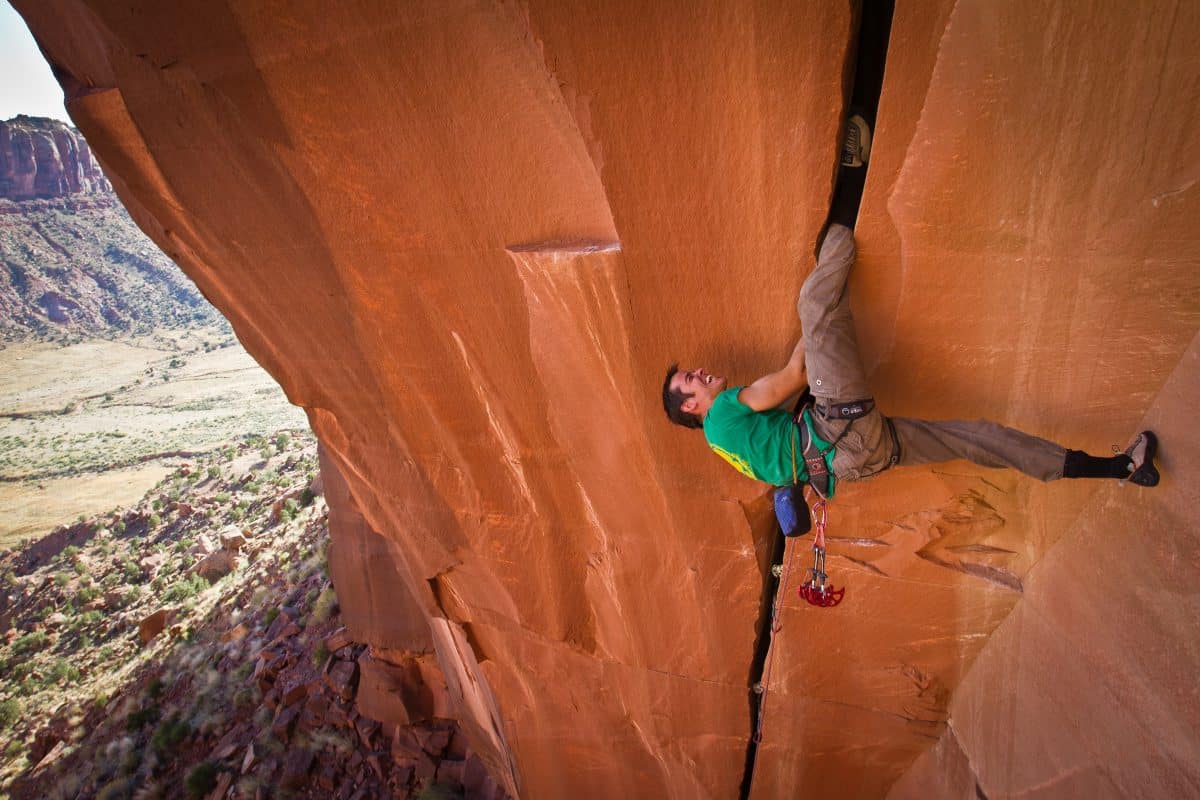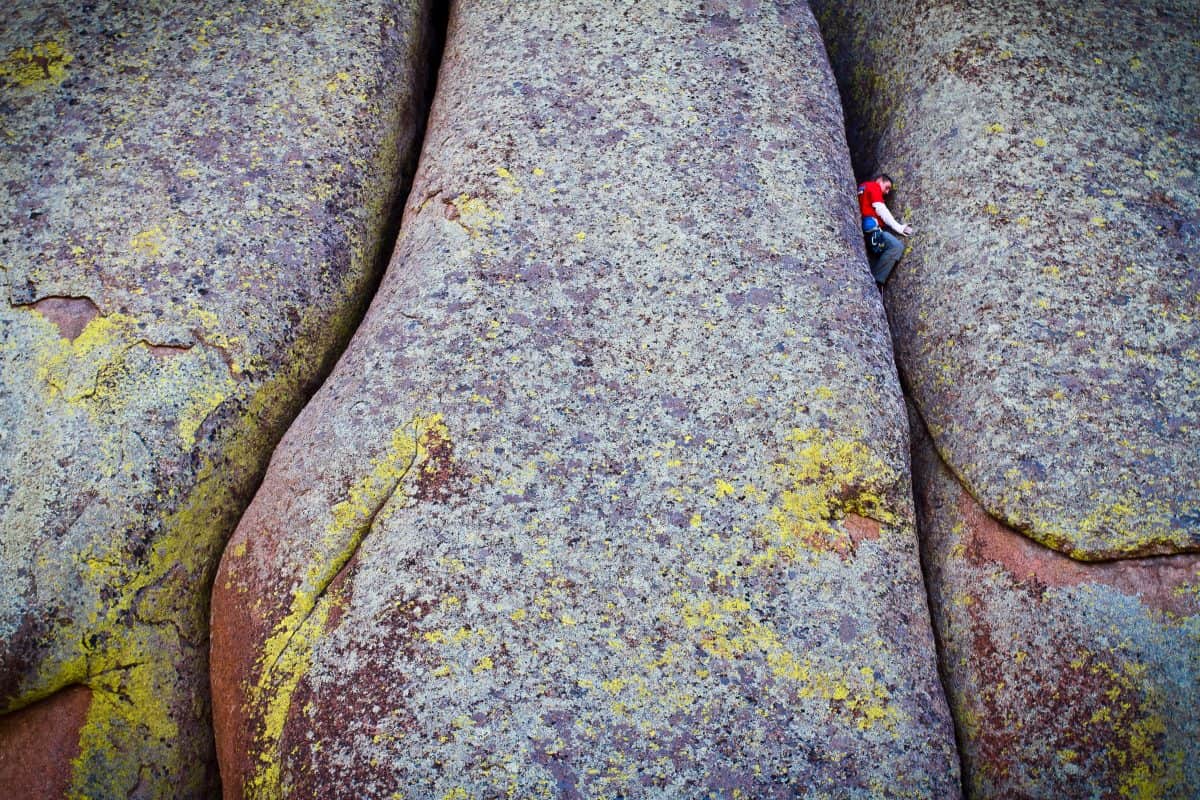The excitement of the festive season has subsided, dry January is starting to wear you down and the days still feel all too short. How oh how do you make your way through the longest month of the year? Plan a rock climbing trip of course!
Escape London, escape Manchester, escape your boss or escape the kids for a week or two of rock climbing bliss in the mountains. Ahhh, I feel better already.
Don’t be put off, but planning a trip can be stressful. Where do you go? What should you pack? How can you prepare? So we’ve broken it down into palatable chunks to help you plan and prepare with minimal panic:

Step 1: Choosing a location
If only you could just go somewhere that looks nice. Just like the UK’s crags, many spots are season dependent and limited in grades. Consider the following when choosing your destination (UKClimbing’s destination articles are good for scouting out possibilities):
- Conditions and weather: what’s the weather like in your destination this time of year? If it’s too hot you’ll be burnt to a crisp and sweating off the holds, if it’s not warm enough you’ll be fighting the hot aches, digging through snow to find your route or hanging out in cafes to escape the rain.
- What’s the climbing like? Dedicated sport climbers should watch out for more ‘traditional’ spots where the bolting is spaced and a trad rack might be necessary (the Verdon Gorge is a great example). If you’re a boulderer going to Fontainbleau, how high are the problems and will you have access to enough pads to protect your falls? Trad climbers should have a suitable rack for the destination.
- How hard is it? There’s no point in going on holiday to a destination where the warm-up climb is the only one you could dream of sending, take a look at the range of grades in the destination and tailor your trip to the needs of your group.
- Alternatives. The problem with weather-dependent activities like climbing is that we can’t guarantee the weather. Are there any nearby alternatives where rock is perma-dry or rain is less likely? Failing that, do you have some back-up activities in mind?
- Travel: how will you (and all your climbing gear) get there in the first place? If you’re using public transport rather than a car, how will you get to the crag?
- Crag approaches: climbers are said to be notorious for avoiding the long walk-ins. This isn’t necessarily the case, but for some destinations a huge slog is the only way to get to the crag. Check out the approaches before you book to avoid a surprise when you arrive!

Before you go
And please don’t leave it all for the day before your climbing trip!
- Insurance is one of those things that you have to buy but never want to use (much like a plunger), but it’s always worth having for that one time you do need it. Some regular insurers don’t include rock climbing in their policy but BMC travel insurance certainly does.
- Research local access as guidebooks can go out of date quickly. If you can’t find your answer consider posting on a forum (UKClimbing for example) or ask in a local shop, bar or tourist information when you get there.
- Keep an eye on weather in the days running up to your trip. This way you can brag to all your friends if it’s sunny, or formulate a backup plan if rain is forecast.
- Check out provisions in the area some climbing destinations can be remote with little in the way of shops so it might be worth stocking up on the way there.
- Save emergency phone numbers for your destination to you phone and, if possible, to your memory.
- Make sure you’ve brushed up on your mountain and rock climbing skills, especially self-rescue! There are plenty of online resources available.
- For thorough training and feedback, you might consider booking onto a rock skills course with an experienced instructor.
- Find out where you can buy the guidebook for the local area. In many destinations they’re available at the local climbing shop or bar.

What to take with you
Finally the fun bit! Well nearly, first you need to pack. Don’t forget these absolute essentials:
- Rock Climbing stuff: harness, rope and rack; slings, climbing shoes, chalk bag, spare chalk, climbing tape. You might want to take a maillon for bailing off a sport route too. Don’t forget your nut key if you need it (someone always forgets their nut key), and certainly don’t forget your belay device!
- Head torch and spare batteries.
- First aid kit: consider taking an expedition kit for the whole trip and strip it down if you’re travelling light. Don’t forget sun cream!
- Water bottle or hydration system.
- Clothes for climbing in and stuff to wear when you’re off the wall too.
- Approach shoes if you’re multipitching these could do with being lightweight.
- Waterproofs and warm clothes for the evening.
- Nail clippers.
- Skincare provisions to help those battered hands repair. Climb On comes highly recommended by the BTE team!
- A good book and a pack of cards (no climbing trip is complete without them). Check out Vertebrate Publishing for some inspirational climbing stories.
- And, of course, your passport and travel documents.
Okay, now it’s time for the fun bit!
Beyond the Edge Ltd is based in Sheffield two hours by train from London and within easy travelling distance from Manchester, Leeds, Nottingham and other Northern towns and cities.
We are one of the UKs most experienced providers of climbing, walking, scrambling, mountaineering and navigation training courses.
Most of our courses are run in the nearby Peak District National Park which has some of the finest climbing, bouldering, walking and hiking in the world.




